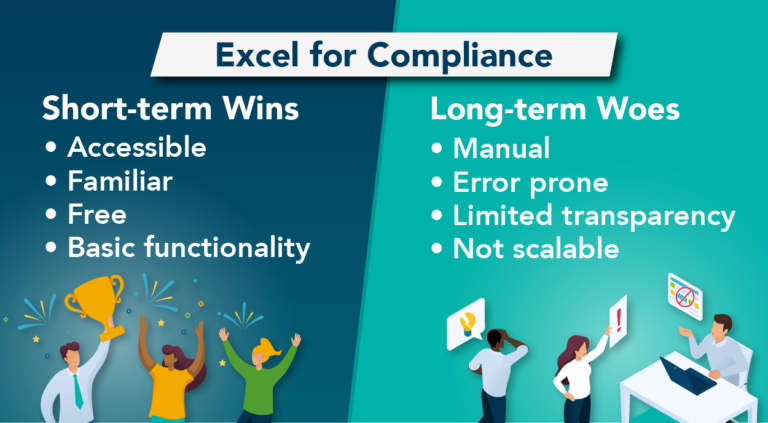Today’s state tax environment brings legislative and regulatory updates on a regular basis. Navigating the impact of changes on state data is a huge ask for any tax department, particularly if their filing footprint covers the majority of states.
Accurate state tax returns depend on having the time and resources to:
- Track each state’s treatment of new federal and international calculations
- Obtain and evaluate state detail for new requirements
- Maintain accurate entity information
- Manage the state modification process
Complying with New Calculations
Accurate state calculations hinge on current and correct federal data, especially as they relate to the tax base and state modifications.
The ability to understand data requirements and track state detail based on how provision impacts state tax is crucial. It’s not always easy to see the treatment of single items buried in federal and state calculations. For example, simple changes to sales at the federal level can cause big changes in states’ apportioned sales. Another example is when a change in one state’s tax liability based on new revenue items is treated differently in other states. These changes can cause big swings in state tax liability.
Therefore, tracking changes is a must for state tax teams. To see changes, there are a number of metrics state teams can track year-over-year. Tax technology allows preparers to store and manage data across complex calculations. Common profiles for entities, accounts, and adjustments and consistent mapping across states eliminates manual effort and repetitive tasks—and sets the stage for data-driven reviews.
Spreadsheet Pros and Cons for Getting, Managing, and Using State Data
Spreadsheets can be useful when working with certain calculations, manipulating data, or reviewing sources. They’re also “free”, easily accessible, and familiar.

On the flip side, spreadsheets:
- Can’t determine completeness of data, or if data has any tax relevance
- Can be challenging to properly maintain—there is often a never-ending flow of data between tabs or other spreadsheets that’s difficult to follow or modify
- Can be prone to human error such as missing a hard-coded number hiding in a formula field
Version control also poses problems when multiple users work in the same spreadsheet – all of which add up to a less-than-optimal strategy.
As for calculating in spreadsheets, let’s circle back to state apportionment and the complexity that goes into calculating it: which factors to use, sourcing rules, location information, special apportionment considerations, and so on.
If you’re not current with changes in state apportionment rules and special elections, calculations could be incorrect, leading to overstating or understating state taxable income.
Given all the complexities, and considering multiple entities, jurisdictions, and various calculations needed for each state, it’s easy to see how items can be missed when relying on spreadsheets.
Sustaining Consistent, Accurate Entity Information
Maintaining accurate entity data helps ensure correct taxing of your legal entities. Each state defines filing requirements differently. An entity considered disregarded in one state may not have filing requirements, but you may need to file an entity return in another state, depending on that state’s treatment of disregarded entities. Without maintaining separate entity data, it’s hard to file accurately and substantiate your work.
Additionally, without separate entity data, it’s tough to trace intercompany transactions needed to complete various combined/consolidated state returns correctly. Intercompany transactions are also key when calculating state apportionment.
Tax can meet changing circumstances with agile software designed to grow with your M&A transactions. This improves and automates filing groups and reduces time spent chasing intercompany transactions.
Streamlining Your State Modification Process
Streamlining state modifications presents another hurdle. Each state must be reviewed separately for any nuances it may now require. Follow these two steps to save time around state modifications.
- Use accurate account mapping to cut time and decrease risk for errors.
- Where possible, automatically map federal accounts to state calculations, so changes in federal amounts flow to state calculations without user intervention.
Federal bonus depreciation and subpart F income (including GILTI) are examples of where mapping of federal accounts helps you calculate your state tax base. Corptax provides a State Compliance Modification tool to substantially decrease the time required to accurately process the work.
CSC Corptax State Tracker Tool and State Tax Law Analysts
State tax compliance has always been challenging due to the volume of requirements and different interpretations of state rules, such as TCJA conformity.
One popular resource for CSC Corptax Compliance customers is the “State Conformity Tracker” which demystifies the interaction of federal-to-state changes. The Tracker updates regularly to reflect the latest jurisdiction-specific information. Below is a snapshot relating to 163(j) conformity, current as of 6/03/2022:
![]()
Corptax also dedicates entire teams to research state tax law changes, state return forms, and e-file approvals. Your state tax teams have access to reviewed and tested state calculations and changes in state tax law, ensuring it’s already in the software. Plus, our experts provide you with support for issues that arise during compliance season.
To learn more, contact our state tax specialists at 800-966-1639 or info@corptax.com.
Discover how single-system tax technology ensures your data flows across processes. Watch: “Mastering International-to-State Compliance During Times of Change”
about this topicAbout Cindy White
Cindy White is a Manager in the Tax Law Analyst Group at CSC Corptax. She researches and reads tax law for selected states and ensures Corptax calculations match given states’ income tax laws. She also stays current with federal tax law changes and newly released state guidance, so clients have the latest information for accurate filing.
